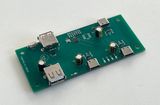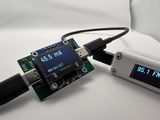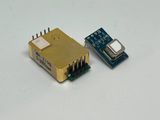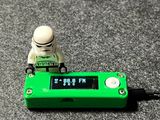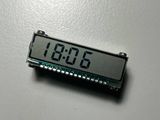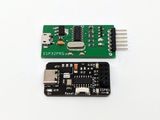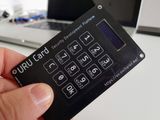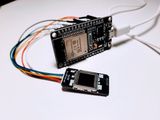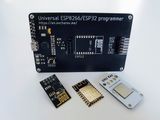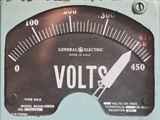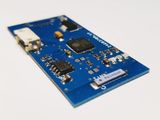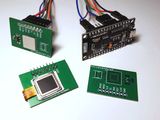USB Power Meter
Comparing MH-Z19B and SCD41: Building a Smarter CO₂ Monitor
Custom FM Receiver with STM32 and RDA5807: Full Project Breakdown
Low-Power LCD Clock with ESP32-C3 and Custom HT1621 Driver
TP4054 - Current-Limiting Resistor Values
CH340G programmer for ESP8266/ESP32 - updated version
So, I have returned to my last year’s design of the CH340G based programmer and upgraded it with the same pinout as the widely known ESP01 module for the better compatibility and the USB Type C receptacle. Nowadays connectors of this type are way more popular than outdated Micro USB ones.
Using MPR121 touch keyboard controller with Arduino
I added a tiny capacitive touch keyboard to the URU Card using the MPR121 chip—and it works great! The PCB has 12 touch pads, the setup is dead simple with I2C and the Adafruit library, and best of all… no debouncing needed. Smooth and responsive UI, just like I hoped.
How to use FPC1020A Capacitive Fingerprint Identification Module with Arduino
Picked up one of those common UART fingerprint modules? I did too. Turns out, it’s not just a scanner—it does internal matching with an onboard STM32 chip. I tested it with an ESP32 board, wrote up a simple Arduino sketch, and it works surprisingly well. Full pinout, usage, and code included!
Universal ESP8266/ESP32 programmer
I finally built myself a universal programmer for ESP8266 and ESP32 boards using a CP2102 chip and a bunch of connectors. It’s simple, cheap, and works with everything—from ESP-01 to my custom URU Card. Full schematic, photos, and files are in the repo if you want to build one too.
How to solder SMD components with stencil
I finally tried using a stencil for soldering SMD components—and wow, total game changer. Ordered my URU Card PCBs + stencil from PCBWay, applied solder paste, placed the parts, hit it with hot air… and boom, working device in under 30 minutes. Bonus: I filmed the whole process in a quick tutorial!
FPC1020 Fingerprint Scanner - detecting finger presence
Back to FPC1020 driver work! I fired up an ESP8266 with Arduino to detect finger presence using the scanner’s built-in sensor matrix. It’s simple, fast, and could help optimize image capture—or even act like a button or gesture detector. Full example code and visuals inside!
How to measure battery level with ESP32 microcontroller
Figured out how to measure battery level on the URU Key using a simple voltage divider and some clever GPIO control. Threw in some ESP32 ADC math to convert readings into a nice 0–100% percentage—and even blink a red LED if the battery’s running low. BLE support coming too!
Using ATECC508A Cryptographic co-processor with ESP32
Time to tackle the ATECC508A crypto chip! I started building an ESP32 component library to use it in my FIDO2 Authenticator. One chip gave me trouble, but another worked perfectly. Lots of I2C fun, ECC signatures, and some helpful inspiration from SparkFun’s Arduino library. One step closer to full hardware-based security.
Progress in capturing raw fingerprint image with FPC1020A scanner
Getting actual fingerprint data out of the FPC1020A scanner was way harder than I expected. After days of digging and reverse-engineering Android kernel drivers, I finally got it to scan! Now I can detect fingers and capture raw images—next stop: matching algorithms.
FPC1020A* Fingerprint Scanners
Finally got my hands on the FPC1020 fingerprint scanners! These things are tiny, SPI-based, and perfect for a built-in solution. I built test boards, hooked them up to a NodeMCU, and wrote a basic Arduino sketch to read the hardware ID. Next step: integrating with the main authenticator project!
CH340G programmer for ESP8266/ESP32
Slightly tired of big and long-running projects both at work and at home I decided to make a small spin-off project to help me working with ESP8266/ESP32 devices. Is there any reason to make it when there are a lot of cheap USB-Serial converters in the market? I don’t think so. My only reason to make it is to have cool addition allowing ESP8266s to be programmed automatically without flash/reset buttons but simple circuit with two transistors. Most of the USB to Serial converters simply do not have this circuitry on board. And, of course, I wanted to have some fun.
